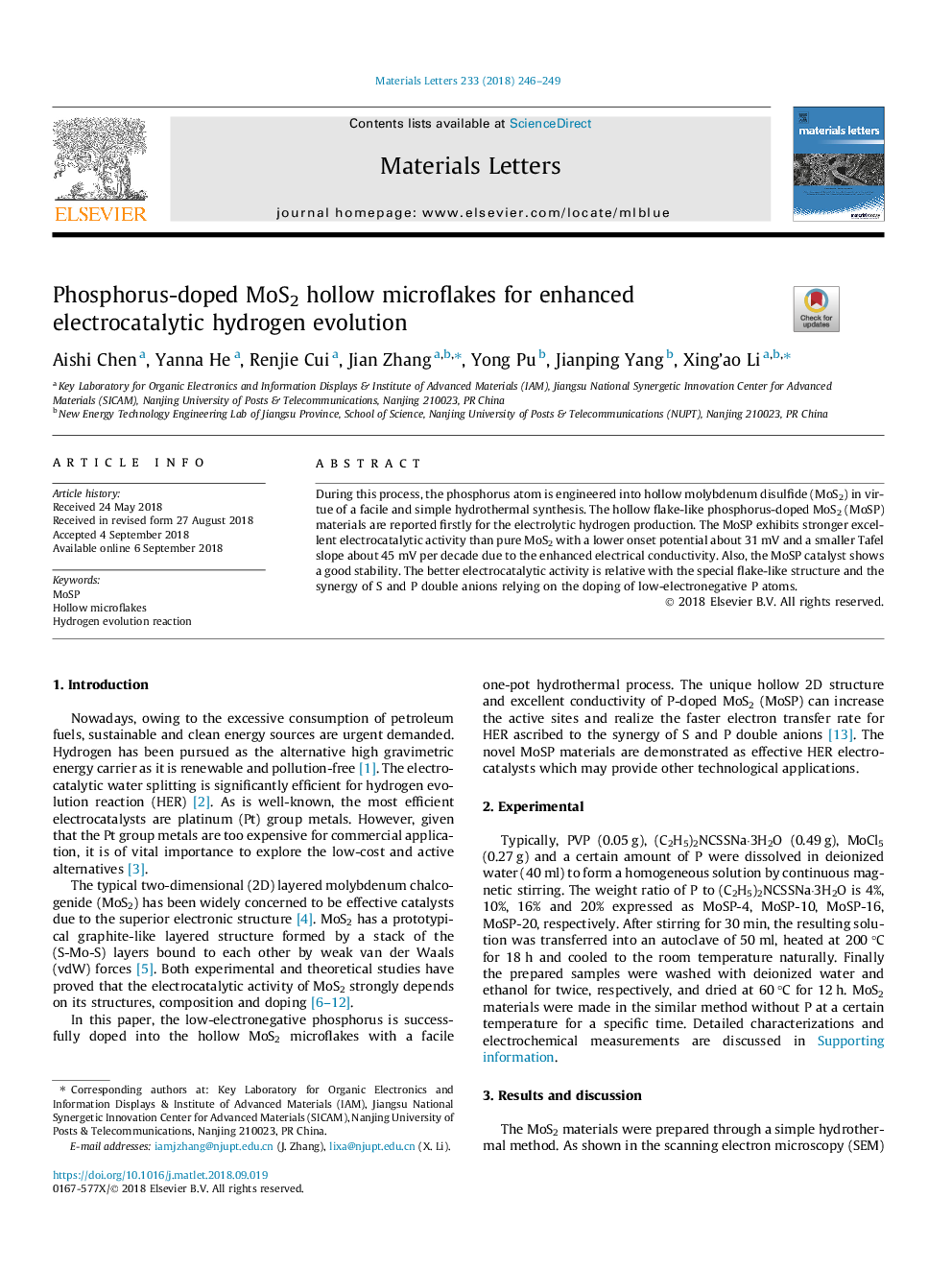| Article ID | Journal | Published Year | Pages | File Type |
|---|---|---|---|---|
| 10142304 | Materials Letters | 2018 | 4 Pages |
Abstract
During this process, the phosphorus atom is engineered into hollow molybdenum disulfide (MoS2) in virtue of a facile and simple hydrothermal synthesis. The hollow flake-like phosphorus-doped MoS2 (MoSP) materials are reported firstly for the electrolytic hydrogen production. The MoSP exhibits stronger excellent electrocatalytic activity than pure MoS2 with a lower onset potential about 31â¯mV and a smaller Tafel slope about 45â¯mV per decade due to the enhanced electrical conductivity. Also, the MoSP catalyst shows a good stability. The better electrocatalytic activity is relative with the special flake-like structure and the synergy of S and P double anions relying on the doping of low-electronegative P atoms.
Keywords
Related Topics
Physical Sciences and Engineering
Materials Science
Nanotechnology
Authors
Aishi Chen, Yanna He, Renjie Cui, Jian Zhang, Yong Pu, Jianping Yang, Xing'ao Li,
